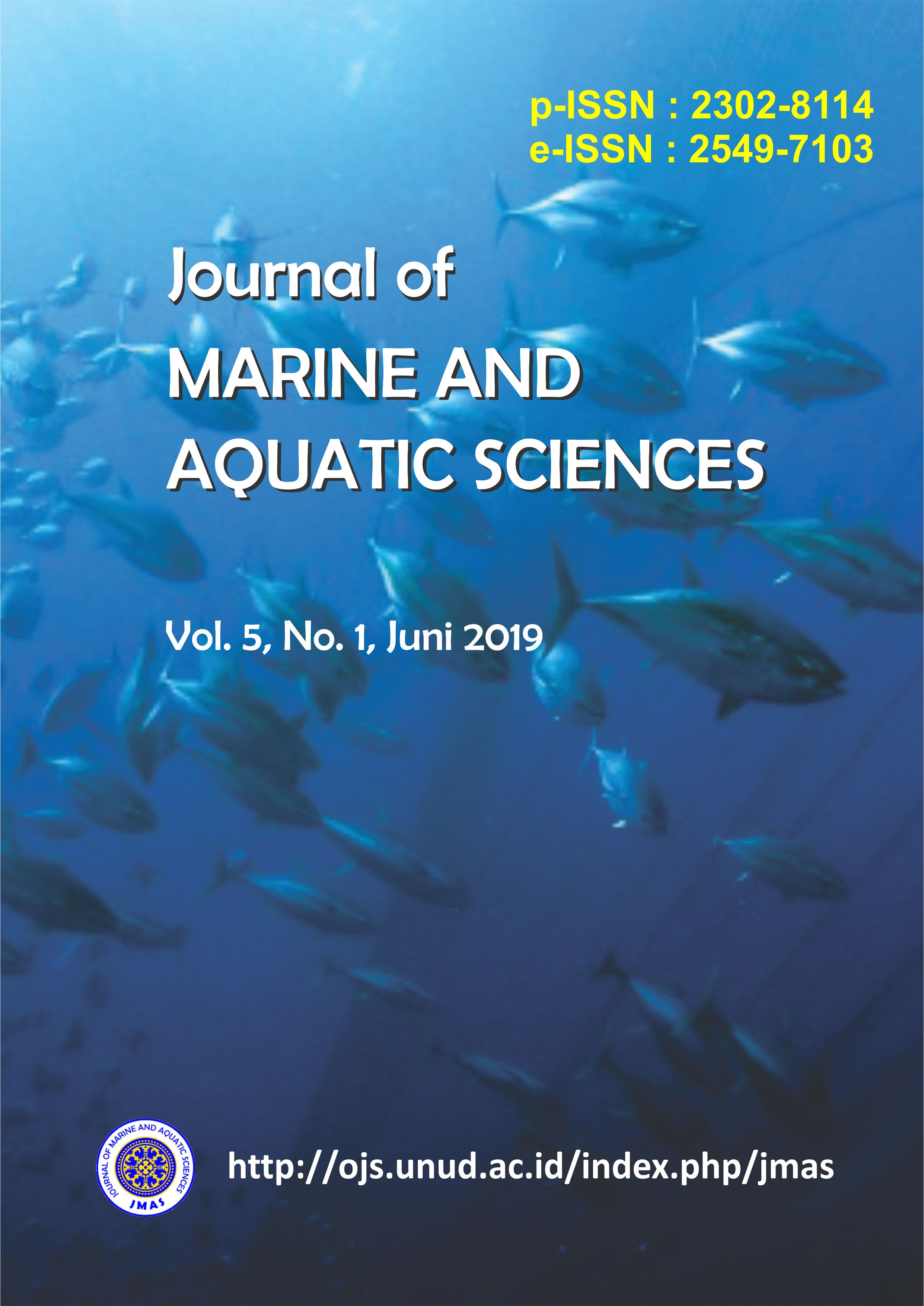Prediksi Laju Sedimentasi di Perairan Teluk Benoa Menggunakan Pemodelan Numerik
Abstract
Benoa Bay is one of the unique ecosystems on the island of Bali because it is a shallow estuary area and has an ecosystem that is important for the waters of the mangrove ecosystem and seagrass. In recent years, Benoa Bay has been reported to have undergone siltation due to sedimentation. However, there has not been much scientific study of the sedimentation rate occurring in Benoa Bay. The study of sedimentation will provide an overview of the rate of sedimetation in the study area. Numerical modeling is one of the most commonly used methods to describe hydrodynamic processes in waters, which are the main drivers of the process of movement of pollutants in waters such as waste, sediment, and others. Thus, the study of sedimentation rate, either spatially or temporally, needs to be done in the waters of Benoa Bay using numerical modeling. The results of this study show that sedimentation rates in Benoa Bay have a minimum value of 1.08x10-6 and a maximum of 24.88 kg/m2/day with an average of 0.57 kg/m2/day. High sedimentation rates occur in the western part of the bay, on the river route, and in the northern part of the bay, between Serangan Island and Mertasari beach. Areas that potentially experience silting in Benoa Bay include the southern port of Benoa Harbor which reaches 0.23 m/year, the waters north of Serangan Island reaching 0.008 m/year, and the area close to the estuary which reaches 0.35 m/year.
Downloads

This work is licensed under a Creative Commons Attribution 3.0 International License.
Copyright 2012 - 2023 Journal of Marine and Aquatic Sciences (JMAS)
Published by Fakultas Kelautan dan Perikanan Universitas Udayana, Denpasar, Bali, Indonesia
JMAS (p-ISSN 2302-8114; e-ISSN 2549-7103)


